 Palestinians walk along a street covered with stagnant wastewater near tents sheltering displaced people in Deir al-Balah, central Gaza Strip, 22 July. APA images)
Palestinians walk along a street covered with stagnant wastewater near tents sheltering displaced people in Deir al-Balah, central Gaza Strip, 22 July. APA images)
As Prime Minister Benjamin Netanyahu traveled to Washington, where he will deliver a speech to Congress on Wednesday, the Israeli military massacred Palestinians throughout Gaza and forced a new wave of mass displacement in the south of the territory.
The World Health Organization meanwhile warned that there was a high risk of the polio virus spreading within and beyond Gaza due to the public health crisis borne of Israel’s destruction and siege.
The highly infectious virus, mainly affecting children under the age of 5, “can invade the nervous system and cause paralysis,” according to Reuters.
“There is a high risk of spreading of the circulating vaccine-derived polio virus in Gaza, not only because of the detection but because of the very dire situation with the water sanitation,” Ayadil Saparbekov, an official with WHO, said on Tuesday.
“It may also spill over internationally, at a very high point,” Saparbekov added.
WHO director Tedros Adhanom Ghebreyesus said on Friday that “no paralytic cases have been detected” so far in Gaza. Prior to Israel’s current offensive, “polio vaccination rates in Gaza were optimal,” he added.
He warned, however, that the “decimation of the health system” in the territory, as well as the “lack of security, access obstruction, constant population displacement, shortages of medical supplies, poor quality of water and weakened sanitation are increasing the risk of vaccine-preventable diseases, including polio.”
A group of Israeli public health professors called for a ceasefire to allow for a “multi-pronged, coordinated and comprehensive” response to stop the disease from spreading, with babies in Gaza and Israel who have not completed their vaccinations at greatest risk.
The detection of remnants of the polio virus in sewage samples tested in Gaza is only the latest indicator of the severe deterioration of public health conditions in the territory.
The catastrophic situation is a predictable if not intentional outcome of Israel’s actions in Gaza. In an op-ed published in Ynet in November, Giora Eiland, a former Israeli military operations chief and head of the National Security Council who is currently serving as an adviser to defense minister Yoav Gallant, called for the deprivation of life essentials in Gaza as a means of biological warfare.
The official death toll in Gaza since 7 October surpassed 39,000 this week, including 16,000 children, though the actual number is likely much higher.
Israeli forces have killed at least 16,000 Palestinian children in Gaza since October 7, according to the latest update from the Governmental Media Office. At least 34 children have starved to death, and the true death toll is feared to be much higher. pic.twitter.com/5SZwYgsL9x
— Defense for Children (@DCIPalestine) July 23, 2024
Thousands of Palestinians remain missing in the rubble or in the streets, or their deaths as a result of secondary mortality such as hunger, thirst and disease resulting from Israel’s military campaign are not reflected in the fatality count.
In a letter published by The Lancet earlier this month, three public health experts conservatively projected “that up to 186,000 or even more deaths could be attributable to the current conflict in Gaza.”
Death and displacement in Khan Younis
Israeli tanks rolled back into Khan Younis on Monday and at least 70 Palestinians were killed and 200 injured in artillery shelling and airstrikes in the eastern areas of the southern Gaza district.
Israel had ordered nearly half a million Palestinians in parts of Khan Younis to leave the area, “forcing residents to flee under fire,” Reuters reported. One survivor told the news agency that the situation was “like doomsday” with many “dead and wounded on the roads.”
New evacuation orders today in Khan Younis mean more suffering and displacement. Families had to pack what is left of their belongings and run, amid bombardment, and with nowhere safe to go.
People in #Gaza are exhausted, living in inhumane conditions, with no safety at all. pic.twitter.com/LSYTEBxMRM
— UNRWA (@UNRWA) July 22, 2024
Israel-Gaza: 400,000 residents ordered to leave Khan Younis pic.twitter.com/2XNyyAPK7a
— Channel 4 News (@Channel4News) July 22, 2024
Nasser Medical Complex, the largest hospital in southern Gaza, struggled to cope with the influx of casualties, warning of dire conditions at the facility and issuing an urgent appeal for blood donations.
The new Israeli orders encompassed part of the so-called “safe zone” that the military had unilaterally declared in al-Mawasi, a coastal area west of Khan Younis where some 1.7 million people displaced from other areas of Gaza are currently concentrated.
This is yet another example of what Special Rapporteur @FranceskAlbs calls ‘humanitarian camouflage’: Israel's use of IHL terminology—such as ‘evacuation orders’ and ‘humanitarian area’—subverting their protective purpose and legitimising genocidal violence in #Gaza. https://t.co/vhwSbCv0Wy
— Al-Mezan ??????? (@AlMezanCenter) July 22, 2024
The new evacuation orders showed the “safe zone” to now be around 50 square kilometers, down from just under 59 square kilometers, reducing the area by some 15 percent.
“As of 22 July, nearly 83 percent of the Gaza Strip has been placed under evacuation orders or designated as ‘no-go zones’ by the Israeli military,” the UN Office for the Coordination of Humanitarian Affairs stated.
The office added that the “frequent evacuation orders and relentless hostilities continue to further devastate Gaza’s health system and make it increasingly difficult for repeatedly displaced populations to access essential services, particularly people suffering from chronic diseases.”
Only 60 dialysis machines are available to more than 1,500 patients requiring kidney dialysis in Gaza. “As a result, patients are undertaking only two dialysis sessions of two hours per week, instead of the required treatment of three four-hour sessions a week,” the UN office said.
Meanwhile, only eight partially functioning hospitals and four field hospitals are currently “providing maternal services with more than 500,000 women in reproductive age lacking access to antenatal and postnatal care, family planning and management of sexually transmitted infections,” the UN office added.
Israel tightens vise on Gaza’s north
The UN Human Rights Office condemned the latest displacement of Palestinians in Khan Younis, saying that the new evacuation order “was issued in the context of ongoing attacks … and gave no time for civilians to know from which areas they were required to leave or where they should go.”
“The evacuation order also covered parts of Salah al-Din Road, which has been one of two main routes vital for the transport and distribution of aid,” the UN office added, “raising concerns that delivery and provision of desperately needed humanitarian assistance will be further reduced or prevented.”
The office said that the supposed “safe zone” in al-Mawasi “has little or no infrastructure to support the masses of civilians who have been already displaced there” and has been repeatedly subjected to Israeli artillery fire and airstrikes.
The Israeli military killed at least 90 Palestinians in al-Mawasi on 13 July, in one of the single deadliest incidents in Gaza since October, while claiming to target Hamas’ military chief Muhammad Deif.
The supposed assassination attempt on Mohammed Deif was, as so many Israeli massacres in Gaza are, a test balloon to see how the West would respond to another encroachment on supposed red lines. Now, even the humanitarian zone is getting openly invaded. None of it matters. https://t.co/vYLWgzsDOi
— Séamus Malekafzali (@Seamus_Malek) July 22, 2024
Israel launched a ground offensive in Khan Younis earlier this year, ordering residents out of the area and wreaking widespread destruction. At that time, many people fled Khan Younis to Rafah, which came under evacuation orders in early May.
Meanwhile, “the Israeli military is escalating its targeting of all aspects and basic elements of life in the Gaza [City] and North Gaza governorates, in an attempt to render them uninhabitable and force their citizens to evacuate to the southern governorates,” the Euro-Med Human Rights Monitor said on Saturday.
The group added that on Saturday morning, “the Israeli army opened fire on several women who were cooking and filling water containers in their home” in the Zarqa neighborhood in northern Gaza, killing 28-year-old Noura al-Sabbagh and injuring several others, one critically.
Earlier in the month, on 2 July, 10 Palestinians including a child and a disabled person were killed by Israeli artillery fire while they gathered to fill water containers in al-Zaytoun, south of Gaza City.
And in late June, three Palestinians were killed when Israel attacked a group of vendors in downtown Gaza City, according to the Euro-Med Monitor.
Journalist killed, UN vehicles hit by live fire
Also on Monday, an Israeli airstrike hit a tent used by journalists in the grounds of Al-Aqsa Hospital in Deir al-Balah, central Gaza, killing one and injuring two others. The deadly strike brought the number of Palestinian journalists killed in Gaza since 7 October to 163, according to the government media office in the territory.
On Tuesday, two UN-marked vehicles were hit with live fire while waiting at a holding point near a checkpoint in Gaza, causing no casualties.
“They were en route to reunite five children, including a baby, with their father,” said Adele Khodr, a regional director with the UN children’s fund.
“This is the second shooting incident involving UNICEF cars on humanitarian duty in the past 12 weeks and on both occasions, the humanitarian consequences could have been severe, for both our teams and the children they serve,” Khodr added.
On Sunday, Israeli forces opened fire toward a UN convoy heading to Gaza City in the north, piercing a UN-marked armored vehicle carrying UNRWA spokesperson Louise Wateridge five times while it was stopped at a checkpoint, causing no casualties.
#Gaza
Heavy shooting from the Israeli Forces at a UN convoy heading to Gaza city.
While there are no casualties, our teams had to duck and take cover.This took place yesterday. The teams were traveling in clearly marked UN armoured cars & wearing UN vests.
One vehicle…
— Philippe Lazzarini (@UNLazzarini) July 22, 2024
More than 200 UN staff members are among the at least 278 aid workers killed in Gaza since October.
On Monday, a bill declaring UNRWA, the UN agency for Palestine refugees, to be a terrorist organization passed a first reading in Israel’s parliament, the Knesset.
Two other bills aimed at preventing UNRWA’s ability to conduct its work already passed the first of three votes required by the Knesset before being enshrined in law.
I am not sure how many other countries have designated through parliamentary law a UN agency as a “terrorist organization” and thus a legitimate military target. This is also the agency that keeps Gaza survivors alive, so genocidal intent is being inscribed in national law. https://t.co/QayABaEBVq
— Nicola Perugini (@PeruginiNic) July 22, 2024
Israel has long sought to shut down the agency, which provides government-like services to millions of Palestinian refugees in Gaza, the West Bank, Jordan, Lebanon and Syria.
Several donor countries halted funding to UNRWA in late January after Israel made unsubstantiated allegations that a handful of its staff in Gaza were involved in the 7 October attack led by Hamas.
Francesca Albanese, the UN special rapporteur on the West Bank and Gaza Strip, warned at the time that countries defunding UNRWA could be doing so in violation of the Genocide Convention.
Yemen
While some countries have defunded UNRWA, the organization with the largest humanitarian footprint in Gaza, groups in Yemen and Lebanon upped the pressure on Israel in their support for the Palestinian people and resistance.
On Sunday, Israel said that it had shot down a missile fired from Yemen, where Ansarullah, the resistance group also known as the Houthis, said it had fired several projectiles toward the port city of Eilat.
Israel bombed the Yemeni port of al-Hudayda on Saturday, killing six people, all of them reportedly civilians, and injuring dozens more, after a drone launched by Ansarullah on Friday hit a building in Tel Aviv, killing one.
Breaching Israel’s air defenses and hitting the heart of Tel Aviv marks a major achievement for the Yemeni armed forces and a severe failure for Israel. It served as a reminder that if a drone fired from some 1,400 miles away could target Israel’s economic capital undetected, then the capabilities of Lebanese resistance group Hizballah are likely to be far more lethal.
The exchange of attacks represents an escalation in the regional spillover from Israel’s military offensive in Gaza.
For months, Ansarullah has maintained a maritime blockade disrupting global trade to pressure Israel to end the genocide in Gaza.
The US had launched strikes on Yemen in response to the Red Sea blockade but the Israeli attack represents the first direct hit by Tel Aviv in response to Ansar Allah.
The Yemeni strike on Tel Aviv comes after Hizballah pledged to ramp up military deterrence against Israel.
During a speech marking the annual Shia commemoration of Ashura, Hasan Nasrallah, the secretary-general of Hizballah, threatened to strike areas deeper in Israel than it has previously reached.
“If Israeli tanks come to Lebanon, they will not only have a shortage in tanks but will never have any tanks left,” Nasrallah said.
Following days of deadly strikes in southern Lebanon, Nasrallah said that Hizballah, which has so far carefully calibrated its response to avoid a full military confrontation with Israel, would respond more forcefully than it has in the past if the attacks continued.
“The resistance missiles will target new Israeli settlements that were not targeted before,” he said.
UN Secretary-General Antonio Guterres was “deeply concerned about the risk of further escalation in the region and continues to urge all to exercise utmost restraint,” the office of his special envoy for Yemen stated after the exchange of fire between Israel and Ansarullah.
But Amal Saad, an expert on Hizballah, observed that the Houthis – as Ansarullah are also known – “are not constrained in the same way other actors in the Resistance Axis are, nor do they subscribe to the same rules of engagement or red lines as Iran or Hizballah.”
“Their retaliation will potentially target non-military sites in Israel, mirroring Israel’s targeting of civilian infrastructure today,” she said on Saturday.
If #Israel doesn't reach a ceasefire deal soon, it will face significant attacks on several fronts. The "support front" to #Gaza is about to end and is expected to turn into a "full front".
— Elijah J. Magnier ?? (@ejmalrai) July 22, 2024
Important context :#Yemen’s targeting of #TelAviv today is independent of #Hezbollah, which has yet to carry out its own response/retaliation to the three assassinations yesterday.
But, there is also a deeper message being sent to the Israelis, to the effect that the axis is in…— Hala Jaber (@HalaJaber) July 19, 2024
Israeli captives declared dead
On Monday, Israel declared dead two Israelis, including a Polish dual national, who were taken captive during Hamas’ military operation on 7 October and held in Gaza ever since.
Israeli media reported that bombing by Israel is their most likely cause of death.
Some 120 captives are believed to remain in Gaza after around 100 were released during a week-long truce and prisoner exchange in November.
Around one-third of the captives remaining in Gaza have been declared dead by Israel in absentia.
Netanyahu met with the families of Israelis being held in Gaza while in Washington on Monday, telling them that “the conditions to get them back are ripening, for the simple reason that we are applying very, very strong pressure, very strong, on Hamas.”
According to The Times of Israel, “Netanyahu indicated that he would like more time to squeeze Hamas further in order to improve Israel’s negotiating position.”
That should be understood as Netanyahu wanting more time to massacre Palestinian civilians in the absence of a battlefield victory in order to maximize pressure on Hamas, which seeks guarantees that a truce and exchange of captives would lead to a permanent ceasefire – conditions that the Israeli prime minister rejects.
Mati Dancyg, the son of one of the Israeli men declared dead in absentia on Monday, said that his father Alex “didn’t just die – he died for the sake of [Benjamin] Netanyahu’s government of destruction.”
Dancyg accused Netanyahu of sabotaging “any chance for a deal” in order “to save his rotten government,” adding that the “sacrificing of the hostages out of political motives is a much, much greater failure than the failure of 7 October.”
Noa Argamani – an Israeli woman who was freed by the Israeli military along with three other captives in a raid that killed at least 274 Palestinians – told Netanyahu during a meeting on Monday that those remaining in Gaza “must be brought home as quickly as possible, before it is too late.”
She reportedly told the Israeli prime minister that “the hardest moment I had in captivity was when I listened to the radio and heard you say the war will be long.”
“I thought, ‘I won’t get out of here.’ It was a breaking point for me,” she said, according to Israeli media.
While Netanyahu is expected to meet US President Joe Biden this week, and a delegation from Tel Aviv is due to arrive in Cairo to resume talks on Wednesday evening, a senior Hamas official said that the Israeli prime minister “is still stalling and he is sending delegations only to calm the anger of Israeli captives’ families.”
• Article first published in the Electronic Intifada
The post Polio virus detected in Gaza as Israel attacks Khan Younis first appeared on Dissident Voice.This post was originally published on Dissident Voice.









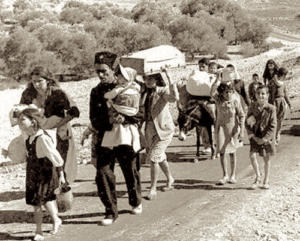

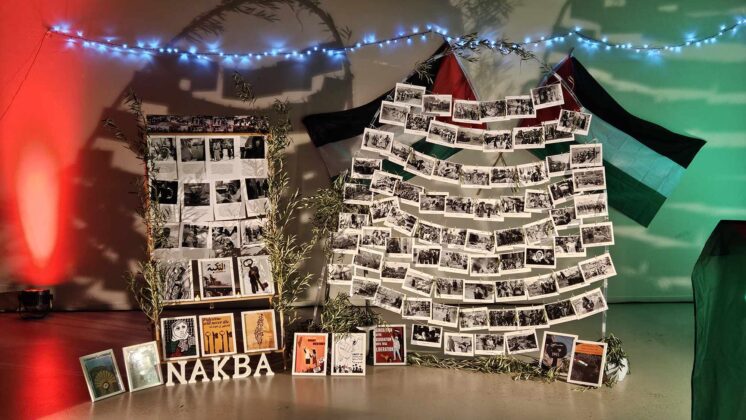
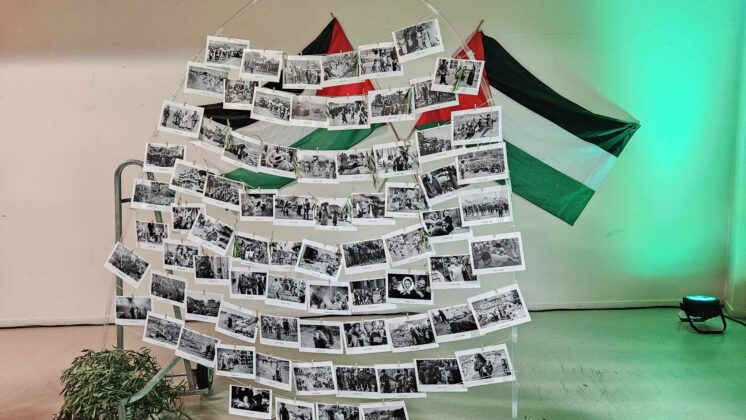

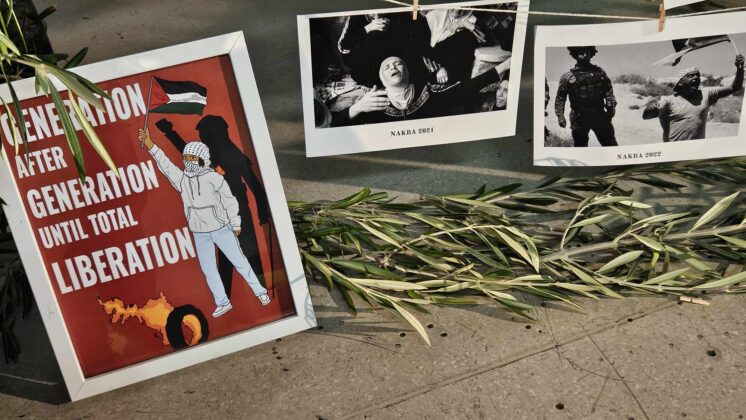
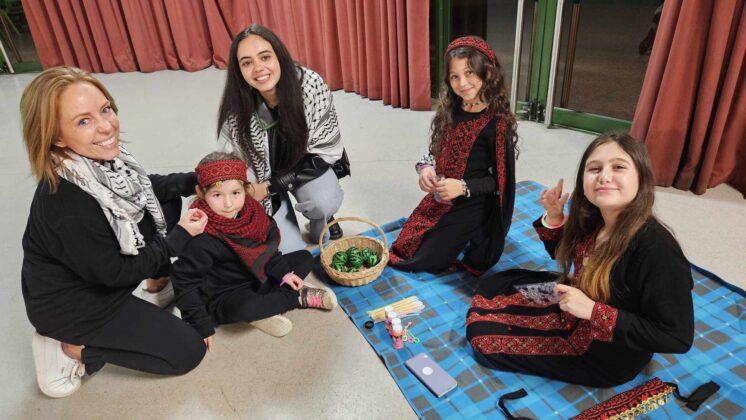

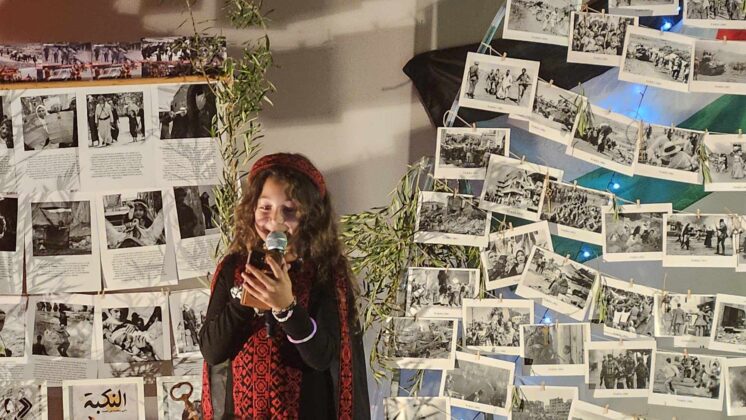
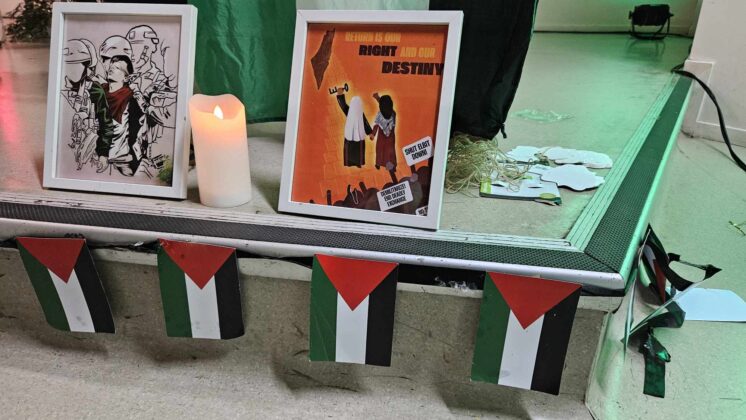
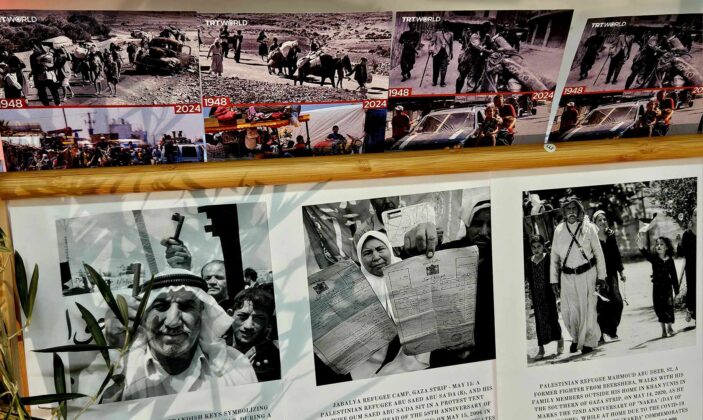
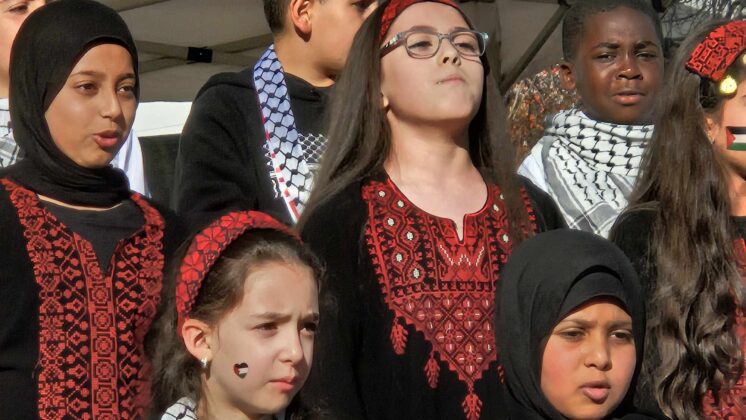
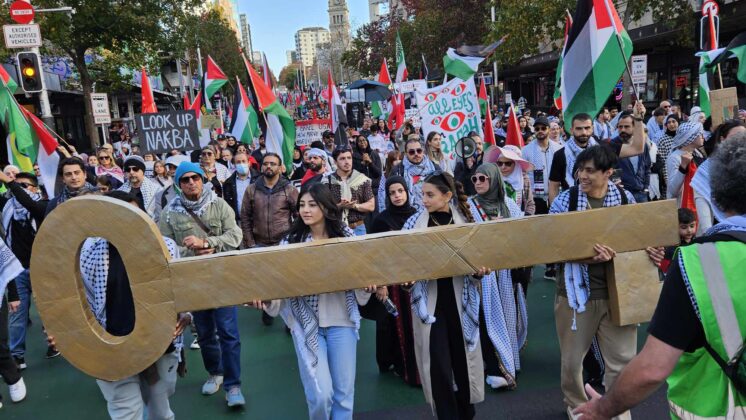
/trim-feed/media/media_files/fe79bbd16c91ffaa9898b5db7700045c9b205b742c4fbc9783af6ef130ba1c4d.jpg)
